{"video":[{"pos":{"top":0,"left":0},"time":{"start":0,"end":3198.479093},"spot":null,"idx":0,"id":"vd-0","videoId":1}],"contents":[{"id":"wk-0","pos":{"top":5,"left":96},"time":{"start":54.5,"end":84.5},"art":"Global warming","lang":"en","wiki":"<div>\n\n<p><b>Global warming</b> and <i>climate change</i> are terms for the observed century-scale rise in the average temperature of the Earth's climate system and its related effects.</p>\n<p>Multiple lines of scientific evidence show that the climate system is warming. Although the increase of near-surface atmospheric temperature is the measure of global warming often reported in the popular press, most of the additional energy stored in the climate system since 1970 has gone into ocean warming. The remainder has melted ice, and warmed the continents and atmosphere. Many of the observed changes since the 1950s are unprecedented over decades to millennia.</p>\n<p>Scientific understanding of global warming is increasing. The Intergovernmental Panel on Climate Change (IPCC) reported in 2014 that scientists were more than 95% certain that most of global warming is caused by increasing concentrations of greenhouse gases and other human (anthropogenic) activities. Climate model projections summarized in the report indicated that during the 21st century the global surface temperature is likely to rise a further 0.3 to 1.7 °C (0.5 to 3.1 °F) for their lowest emissions scenario using stringent mitigation and 2.6 to 4.8 °C (4.7 to 8.6 °F) for their highest. These findings have been recognized by the national science academies of the major industrialized nations.</p>\n<p>Future climate change and associated impacts will differ from region to region around the globe. Anticipated effects include warming global temperature, rising sea levels, changing precipitation, and expansion of deserts in the subtropics. Warming is expected to be greatest in the Arctic, with the continuing retreat of glaciers, permafrost and sea ice. Other likely changes include more frequent extreme weather events including heat waves, droughts, heavy rainfall, and heavy snowfall; ocean acidification; and species extinctions due to shifting temperature regimes. Effects significant to humans include the threat to food security from decreasing crop yields and the abandonment of populated areas due to flooding.</p>\n<p>Possible societal responses to global warming include mitigation by emissions reduction, adaptation to its effects, building systems resilient to its effects, and possible future climate engineering. Most countries are parties to the United Nations Framework Convention on Climate Change (UNFCCC),</p>\n<p>whose ultimate objective is to prevent dangerous anthropogenic climate change. The UNFCCC have adopted a range of policies designed to reduce greenhouse gas emissions and to assist in adaptation to global warming. Parties to the UNFCCC have agreed that deep cuts in emissions are required, and that future global warming should be limited to below 2.0 °C (3.6 °F) relative to the pre-industrial level.</p>\n\n<p><br>\n</p>\n\n\n<!-- \nNewPP limit report\nParsed by mw1143\nCached time: 20150922081314\nCache expiry: 2592000\nDynamic content: false\nCPU time usage: 0.622 seconds\nReal time usage: 0.735 seconds\nPreprocessor visited node count: 1399/1000000\nPreprocessor generated node count: 0/1500000\nPost‐expand include size: 55942/2097152 bytes\nTemplate argument size: 4048/2097152 bytes\nHighest expansion depth: 10/40\nExpensive parser function count: 2/500\nLua time usage: 0.327/10.000 seconds\nLua memory usage: 6.31 MB/50 MB\nNumber of Wikibase entities loaded: 0-->\n\n<!-- \nTransclusion expansion time report (%,ms,calls,template)\n100.00% 705.478 1 - -total\n 14.31% 100.979 1 - Template:Pp-semi-indef\n 10.16% 71.689 7 - Template:Convert\n 8.06% 56.868 2 - Template:Cite_report\n 6.74% 47.545 7 - Template:Cite_journal\n 6.63% 46.746 2 - Template:Broken_ref\n 5.53% 39.015 1 - Template:Hatnote\n 5.31% 37.428 1 - Template:Featured_article\n 5.16% 36.406 6 - Template:Cite_web\n 4.87% 34.374 1 - Template:Top_icon\n-->\n</div><a href=\"http://en.wikipedia.org/wiki/Global warming\" target=\"_blank\">Continua a leggere..</a>","title":"Global warming"},{"id":"wk-1","pos":{"top":5,"left":96},"time":{"start":94.7,"end":124.7},"art":"Glacier Bay Basin","lang":"en","wiki":"<div style=\"float:left;margin-right:10px\"><img src=\"http://upload.wikimedia.org/wikipedia/commons/thumb/d/dd/Glacer_Bay_Map.jpg/240px-Glacer_Bay_Map.jpg\"></div><br><div>\n\n<p><b>Glacier Bay Basin</b> in southeastern Alaska, in the United States, encompasses the Glacier Bay and surrounding mountains and glaciers, which was first proclaimed a U.S. National Monument on February 25, 1925, and which was later, on December 2, 1980, enlarged and designated as the Glacier Bay National Park and Preserve under the Alaska National Interest Lands Conservation Act, covering an area of 3,283,000 acres (1,329,000 ha). In 1986, UNESCO declared an area of 57,000 acres (23,000 ha) within a World Biosphere Reserve. This is the largest UNESCO protected biosphere in the world. In 1992, UNESCO included this area as a part of a World Heritage site, extending over an area of 24,300,000-acre (98,000 km) which also included the Wrangell-St. Elias National Park, Kluane National Park (Canada) and Tatshenshini-Alsek Park (Canada). Part of the National Park is also designated a Wilderness area covering 2,658,000 acres (1,076,000 ha).</p>\n<p>Glacier Bay, the body of water, covers an area 1,375 square miles (3,560 km) of glaciers and accounts for 27% of the Park area. It was a large single glacier of solid ice till early 18th century. It started retreating and evolved over the centuries into the largest protected water area park in the world. Glacier Bay, on the Gulf of Alaska, was known as the Grand Pacific Glacier about 4,000 feet (1,200 m) thick and about 20 miles (32 km) in width which has since then, over the last more than 200 years retreated by 65 miles (105 km) to the head of the bay at Tarr Inlet, and in this process left separate 20 other glaciers in its trail. In 1890, the name “Glacier Bay” as such was given to the bay by Captain Lester A. Beardslee of the U.S. Navy. It was first proclaimed a U.S. National Monument on February 25, 1925, by President Calvin Coolidge.</p>\n<p>The Glacier Bay has many branches, inlets, lagoons, islands, and channels that holds prospects for scientific exploration and visual treat. Thus, the area is popular as a cruise ship destination during summer season. However, there are restrictions imposed by the National Park Service on the numbers of vessels that can operate in a day to 2 cruise ships, 3 tour boats, 6 charter vessels, and 25 private vessels. According to National Park Service statistics for calendar year 2009, 444,653 people visited Glacier Bay, with 422,919 of those being cruise ship passengers.</p>\n\n\n\n<!-- \nNewPP limit report\nParsed by mw1234\nCached time: 20150922081340\nCache expiry: 2592000\nDynamic content: false\nCPU time usage: 0.215 seconds\nReal time usage: 0.277 seconds\nPreprocessor visited node count: 1179/1000000\nPreprocessor generated node count: 0/1500000\nPost‐expand include size: 22292/2097152 bytes\nTemplate argument size: 3521/2097152 bytes\nHighest expansion depth: 14/40\nExpensive parser function count: 1/500\nLua time usage: 0.092/10.000 seconds\nLua memory usage: 4.17 MB/50 MB\nNumber of Wikibase entities loaded: 1-->\n\n<!-- \nTransclusion expansion time report (%,ms,calls,template)\n100.00% 263.021 1 - -total\n 40.36% 106.144 1 - Template:Infobox_body_of_water\n 35.09% 92.300 1 - Template:Infobox\n 16.80% 44.184 1 - Template:Good_article\n 15.99% 42.063 1 - Template:Top_icon\n 14.36% 37.778 5 - Template:Convert\n 9.63% 25.333 1 - Template:About\n 9.55% 25.112 1 - Template:Cite_book\n 9.53% 25.073 3 - Template:Category_handler\n 8.12% 21.347 1 - Template:Coord\n-->\n</div><a href=\"http://en.wikipedia.org/wiki/Glacier Bay Basin\" target=\"_blank\">Continua a leggere..</a>","title":"Glacier Bay Basin"},{"id":"wk-2","pos":{"top":5,"left":96},"time":{"start":150.7,"end":180.7},"art":"Messner Mountain Museum","lang":"en","wiki":"<div style=\"float:left;margin-right:10px\"><img src=\"http://upload.wikimedia.org/wikipedia/commons/thumb/5/5a/Messner_Mountain_Musem.jpg/220px-Messner_Mountain_Musem.jpg\"></div><br><div>\n<p>The <b>Messner Mountain Museum</b> or <b>MMM</b> is a museum project created by Italian mountaineer and extreme climber Reinhold Messner in South Tyrol in northern Italy. Messner's museum project is designed to educate visitors on man's encounter with mountains, the science of mountains and glaciers, the history of mountaineering and rock climbing, the history of mythical mountains, and the history of mountain people.</p>\n<p>The museum project consists of five museums based at five different locations: Firmian, Juval, Dolomites, Ortles, and Ripa. MMM Firmian at Sigmundskron Castle near Bozen is the centerpiece of the museum and concentrates on man’s relationship with the mountains. The museum includes displays on the geology of the mountains, the religious significance of mountains in the lives of people, and the history of mountaineering and alpine tourism. MMM Juval at Juval Castle in the Burggrafenamt in Vinschgau is dedicated to the \"magic of the mountains\", with an emphasis on mystical mountains and their religious significance. MMM Dolomites at Monte Rite, housed in an old fort, is dedicated to the subject of rocks, particularly in the Dolomites, with exhibits focusing on the history of the formation of the Dolomites. This museum contains a summit observation platform that offers a 360° panorama of the surrounding Dolomites. MMM Ortles at Sulden on the Ortler is dedicated to the history of mountaineering on ice and the great glaciers of the world. MMM Ripa at Bruneck Castle in South Tyrol is dedicated to the mountain peoples from Asia, Africa, South America and Europe, with emphasis on their cultures, religions, and tourism activities.</p>\n\n\n\n<!-- \nNewPP limit report\nParsed by mw1222\nCached time: 20150922081431\nCache expiry: 2592000\nDynamic content: false\nCPU time usage: 0.115 seconds\nReal time usage: 0.140 seconds\nPreprocessor visited node count: 592/1000000\nPreprocessor generated node count: 0/1500000\nPost‐expand include size: 13403/2097152 bytes\nTemplate argument size: 1132/2097152 bytes\nHighest expansion depth: 17/40\nExpensive parser function count: 0/500\nLua time usage: 0.040/10.000 seconds\nLua memory usage: 2.12 MB/50 MB\nNumber of Wikibase entities loaded: 0-->\n\n<!-- \nTransclusion expansion time report (%,ms,calls,template)\n100.00% 128.633 1 - -total\n 48.11% 61.887 1 - Template:Infobox_museum\n 44.03% 56.640 1 - Template:Infobox\n 27.27% 35.077 6 - Template:Cite_web\n 6.53% 8.406 1 - Template:Start_date\n 3.98% 5.118 1 - Template:URL\n 3.75% 4.824 1 - Template:MONTHNAME\n 2.03% 2.613 1 - Template:MONTHNUMBER\n 1.83% 2.353 2 - Template:Plainlist\n 1.17% 1.509 1 - Template:Both\n-->\n</div><a href=\"http://en.wikipedia.org/wiki/Messner Mountain Museum\" target=\"_blank\">Continua a leggere..</a>","title":"Messner Mountain Museum"},{"id":"wk-3","pos":{"top":5,"left":96},"time":{"start":190.3,"end":220.3},"art":"Reinhold Messner","lang":"en","wiki":"<div style=\"float:left;margin-right:10px\"><img src=\"http://upload.wikimedia.org/wikipedia/commons/thumb/9/9a/Reinhold_Messner_at_Juval_(2012).JPG/220px-Reinhold_Messner_at_Juval_(2012).JPG\"></div><br><div>\n<p><b>Reinhold Messner</b> (born 17 September 1944) is a mountaineer, adventurer, explorer, and author from the autonomous Italian province of South Tyrol.</p>\n<p>He is renowned for making the first ascent of Mount Everest without supplemental oxygen along with Peter Habeler, and for being the first climber to ascend all fourteen \"eight-thousanders\" (peaks over 8,000 metres (26,000 ft) above sea level). He is the author of at least 63 books, many of which have been translated into other languages.</p>\n\n\n<!-- \nNewPP limit report\nParsed by mw1117\nCached time: 20150922081517\nCache expiry: 3600\nDynamic content: true\nCPU time usage: 0.169 seconds\nReal time usage: 0.208 seconds\nPreprocessor visited node count: 438/1000000\nPreprocessor generated node count: 0/1500000\nPost‐expand include size: 5461/2097152 bytes\nTemplate argument size: 1142/2097152 bytes\nHighest expansion depth: 16/40\nExpensive parser function count: 1/500\nLua time usage: 0.062/10.000 seconds\nLua memory usage: 2.01 MB/50 MB\nNumber of Wikibase entities loaded: 0-->\n\n<!-- \nTransclusion expansion time report (%,ms,calls,template)\n100.00% 157.799 1 - -total\n 45.99% 72.572 1 - Template:Infobox_climber\n 43.06% 67.951 1 - Template:Infobox\n 29.34% 46.291 1 - Template:Convert\n 24.53% 38.710 1 - Template:Use_dmy_dates\n 17.01% 26.845 2 - Template:Br_separated_entries\n 9.82% 15.491 1 - Template:DMCA\n 8.63% 13.613 1 - Template:Birth_date_and_age\n 8.31% 13.108 1 - Template:Dated_maintenance_category\n 5.71% 9.009 1 - Template:FULLROOTPAGENAME\n-->\n</div><a href=\"http://en.wikipedia.org/wiki/Reinhold Messner\" target=\"_blank\">Continua a leggere..</a>","title":"Reinhold Messner"},{"id":"wk-4","pos":{"top":5,"left":96},"time":{"start":471.8,"end":501.8},"art":"Alaska","lang":"en","wiki":"<div style=\"float:left;margin-right:10px\"><img src=\"http://upload.wikimedia.org/wikipedia/commons/thumb/e/e6/Flag_of_Alaska.svg/125px-Flag_of_Alaska.svg.png\"></div><br><div>\n\n<p><span style=\"font-size: small;\"></span></p>\n\n<p><b>Alaska</b> (<span class=\"nowrap\"><span class=\"noexcerpt\"><img alt=\"Listen\" src=\"//upload.wikimedia.org/wikipedia/commons/thumb/3/3b/Speakerlink-new.svg/11px-Speakerlink-new.svg.png\" width=\"11\" height=\"11\" srcset=\"//upload.wikimedia.org/wikipedia/commons/thumb/3/3b/Speakerlink-new.svg/17px-Speakerlink-new.svg.png 1.5x, //upload.wikimedia.org/wikipedia/commons/thumb/3/3b/Speakerlink-new.svg/22px-Speakerlink-new.svg.png 2x\" data-file-width=\"11\" data-file-height=\"11\"></span><span class=\"IPA nopopups\">/<span style=\"border-bottom:1px dotted\"><span title=\"/ə/ 'a' in 'about'\">ə</span><span title=\"/ˈ/ primary stress follows\">ˈ</span><span title=\"'l' in 'lie'\">l</span><span title=\"/æ/ short 'a' in 'bad'\">æ</span><span title=\"'s' in 'sigh'\">s</span><span title=\"'k' in 'kind'\">k</span><span title=\"/ə/ 'a' in 'about'\">ə</span></span>/</span></span>) is a U.S. state situated in the northwest extremity of the North American continent. Bordering the state to the east is the Canadian territory of Yukon and the Canadian province of British Columbia, the Arctic Ocean to the north, and the Pacific Ocean to the west and south, with Russia (specifically, Chukotka Autonomous Okrug and Kamchatka Krai) farther west across the Bering Strait. Alaska is the largest state in the United States by area, the 4th least populous and the least densely populated of the 50 United States. Approximately half of Alaska's 735,132 residents live within the Anchorage metropolitan area. Alaska's economy is dominated by the oil, natural gas, and fishing industries, resources which it has in abundance. Tourism is also a significant part of the economy.</p>\n<p>Although it had been occupied for thousands of years by indigenous peoples, from the 18th century onward, European powers considered the territory of Alaska ripe for exploitation and trade. The United States purchased Alaska from the Russian Empire on March 30, 1867, for 7.2 million U.S. dollars at approximately two cents per acre ($4.74/km). The area went through several administrative changes before becoming organized as a territory on May 11, 1912. It was admitted as the 49th state of the U.S. on January 3, 1959.</p>\n\n\n\n<!-- \nNewPP limit report\nParsed by mw1191\nCached time: 20150922081607\nCache expiry: 2592000\nDynamic content: false\nCPU time usage: 0.388 seconds\nReal time usage: 0.477 seconds\nPreprocessor visited node count: 1183/1000000\nPreprocessor generated node count: 0/1500000\nPost‐expand include size: 43735/2097152 bytes\nTemplate argument size: 3954/2097152 bytes\nHighest expansion depth: 12/40\nExpensive parser function count: 5/500\nLua time usage: 0.238/10.000 seconds\nLua memory usage: 3.4 MB/50 MB\nNumber of Wikibase entities loaded: 1-->\n\n<!-- \nTransclusion expansion time report (%,ms,calls,template)\n100.00% 449.969 1 - -total\n 37.23% 167.537 6 - Template:Infobox\n 23.53% 105.881 1 - Template:Infobox_U.S._state\n 21.04% 94.657 1 - Template:Pp-semi\n 12.84% 57.775 1 - Template:Coord\n 8.65% 38.916 2 - Template:Broken_ref\n 8.17% 36.775 1 - Template:About\n 7.34% 33.044 3 - Template:Cite_web\n 6.68% 30.041 1 - Template:Cite_gnis\n 6.40% 28.797 1 - Template:Hatnote\n-->\n</div><a href=\"http://en.wikipedia.org/wiki/Alaska\" target=\"_blank\">Continua a leggere..</a>","title":"Alaska"},{"id":"wk-5","pos":{"top":5,"left":96},"time":{"start":800.9,"end":830.9},"art":"John Muir","lang":"en","wiki":"<div style=\"float:left;margin-right:10px\"><img src=\"http://upload.wikimedia.org/wikipedia/commons/thumb/9/92/John_Muir_c1902.jpg/240px-John_Muir_c1902.jpg\"></div><br><div>\n\n<p><b>John Muir</b> (<span class=\"nowrap\"><span class=\"IPA nopopups\">/<span style=\"border-bottom:1px dotted\"><span title=\"'m' in 'my'\">m</span><span title=\"/jʊər/ 'ure' in 'cure'\">jʊər</span></span>/</span></span>; April 21, 1838 – December 24, 1914) was a Scottish-American naturalist, author, environmental philosopher and early advocate of preservation of wilderness in the United States. His letters, essays, and books telling of his adventures in nature, especially in the Sierra Nevada mountains of California, have been read by millions. His activism helped to preserve the Yosemite Valley, Sequoia National Park and other wilderness areas. The Sierra Club, which he founded, is a prominent American conservation organization. The 211-mile (340 km) John Muir Trail, a hiking trail in the Sierra Nevada, was named in his honor. Other such places include Muir Woods National Monument, Muir Beach, John Muir College, Mount Muir, Camp Muir and Muir Glacier. In Scotland, the John Muir Way, a 130 mile long distance route, was named in honor of him.</p>\n<p>In his later life, Muir devoted most of his time to the preservation of the Western forests. He petitioned the U.S. Congress for the National Park bill that was passed in 1890, establishing Yosemite National Park. The spiritual quality and enthusiasm toward nature expressed in his writings inspired readers, including presidents and congressmen, to take action to help preserve large nature areas. He is today referred to as the \"Father of the National Parks\" and the National Park Service has produced a short documentary about his life.</p>\n<p>Muir has been considered 'an inspiration to both Scots and Americans'. Muir's biographer, Steven J. Holmes, believes that Muir has become \"one of the patron saints of twentieth-century American environmental activity,\" both political and recreational. As a result, his writings are commonly discussed in books and journals, and he is often quoted by nature photographers such as Ansel Adams. \"Muir has profoundly shaped the very categories through which Americans understand and envision their relationships with the natural world,\" writes Holmes. Muir was noted for being an ecological thinker, political spokesman, and religious prophet, whose writings became a personal guide into nature for countless individuals, making his name \"almost ubiquitous\" in the modern environmental consciousness. According to author William Anderson, Muir exemplified \"the archetype of our oneness with the earth\", while biographer Donald Worster says he believed his mission was \"...saving the American soul from total surrender to materialism.\" On April 21, 2013, the first ever John Muir Day was celebrated in Scotland, which marked the 175th anniversary of his birth, paying homage to the conservationist.</p>\n\n\n\n<!-- \nNewPP limit report\nParsed by mw1192\nCached time: 20150922081647\nCache expiry: 86400\nDynamic content: true\nCPU time usage: 0.309 seconds\nReal time usage: 0.389 seconds\nPreprocessor visited node count: 1639/1000000\nPreprocessor generated node count: 0/1500000\nPost‐expand include size: 20560/2097152 bytes\nTemplate argument size: 2814/2097152 bytes\nHighest expansion depth: 16/40\nExpensive parser function count: 1/500\nLua time usage: 0.113/10.000 seconds\nLua memory usage: 4.6 MB/50 MB\nNumber of Wikibase entities loaded: 1-->\n\n<!-- \nTransclusion expansion time report (%,ms,calls,template)\n100.00% 363.067 1 - -total\n 33.66% 122.220 1 - Template:Infobox_person\n 25.33% 91.952 1 - Template:Infobox\n 13.68% 49.655 2 - Template:Broken_ref\n 10.16% 36.885 1 - Template:Convert\n 9.30% 33.752 5 - Template:Br_separated_entries\n 9.20% 33.401 1 - Template:About\n 8.79% 31.916 3 - Template:Cite_web\n 7.22% 26.200 1 - Template:Hatnote\n 5.50% 19.963 1 - Template:Wikidata_image\n-->\n</div><a href=\"http://en.wikipedia.org/wiki/John Muir\" target=\"_blank\">Continua a leggere..</a>","title":"John Muir"},{"id":"wk-6","pos":{"top":5,"left":96},"time":{"start":938.9,"end":968.9},"art":"American black bear","lang":"en","wiki":"<div style=\"float:left;margin-right:10px\"><img src=\"http://upload.wikimedia.org/wikipedia/commons/thumb/0/08/01_Schwarzbär.jpg/220px-01_Schwarzbär.jpg\"></div><br><div>\n<p>The <b>American black bear</b> (<i>Ursus americanus</i>) is a medium-sized bear native to North America. It is the continent's smallest and most widely distributed bear species. Black bears are omnivores with their diets varying greatly depending on season and location. They typically live in largely forested areas, but do leave forests in search of food. Sometimes they become attracted to human communities because of the immediate availability of food. The American black bear is the world's most common bear species.</p>\n<p>It is listed by the IUCN as a \"least concern\" species, due to its widespread distribution and a large global population estimated to be twice that of all other bear species combined. Along with the brown bear, it is one of only two of the eight modern bear species not considered globally threatened with extinction by the IUCN. American black bears often mark trees using their teeth and claws as a form of communication with other bears, a behavior common to many species of bears.</p>\n\n\n\n<!-- \nNewPP limit report\nParsed by mw1227\nCached time: 20150922081752\nCache expiry: 2592000\nDynamic content: false\nCPU time usage: 0.230 seconds\nReal time usage: 0.270 seconds\nPreprocessor visited node count: 11560/1000000\nPreprocessor generated node count: 0/1500000\nPost‐expand include size: 33450/2097152 bytes\nTemplate argument size: 14038/2097152 bytes\nHighest expansion depth: 20/40\nExpensive parser function count: 1/500\nLua time usage: 0.008/10.000 seconds\nLua memory usage: 706 KB/50 MB\nNumber of Wikibase entities loaded: 0-->\n\n<!-- \nTransclusion expansion time report (%,ms,calls,template)\n100.00% 260.221 1 - -total\n 72.76% 189.344 1 - Template:Taxobox\n 68.94% 179.394 1 - Template:Taxobox/core\n 37.70% 98.110 1 - Template:Fossil_range\n 34.92% 90.878 1 - Template:Phanerozoic_220px\n 28.89% 75.189 11 - Template:Fossil_range/bar\n 24.13% 62.795 34 - Template:Period_start\n 12.13% 31.577 11 - Template:Period_end\n 9.24% 24.037 7 - Template:Taxonomy\n 6.89% 17.935 14 - Template:Anglicise_rank\n-->\n</div><a href=\"http://en.wikipedia.org/wiki/American black bear\" target=\"_blank\">Continua a leggere..</a>","title":"American black bear"},{"id":"wk-7","pos":{"top":5,"left":96},"time":{"start":1038.2,"end":1068.2},"art":"Mire","lang":"en","wiki":"<div>\n\n\n<p>A <b>mire</b> or <b>quagmire</b>, sometimes called a <b>peatland</b> in North America, is a wetland terrain without forest cover dominated by living, peat-forming plants. For botanists and ecologists, the term <i>peatland</i> is a more general term for any terrain dominated by peat to a depth of at least 30 cm (12 in), even if it has been completely drained (i.e., a peatland can be dry, but a mire by definition must be wet).</p>\n<p>There are two types of mire – fens and bogs. A bog is situated on a domed-shaped land form, is higher than the surrounding landscape, and obtains most of its water from rainfall (i.e., is ombrotrophic) while a fen is located on a slope, flat, or depression and gets its water from both rainfall <i>and</i> surface water.</p>\n<p>Also, while a bog is always acidic and nutrient-poor, a fen may be either acidic or alkaline and either nutrient-poor or nutrient-rich. A mire is distinguished from a swamp by its lack of a forest canopy (though some bogs may support limited tree or bush growth, mires are dominated by grass and mosses), and from a marsh by its water nutrients and distribution (marshes are characterized by nutrient-rich stagnant or slow-moving waters; mire waters are located mostly below the soil surface level) as well as its plant life (marsh plants are generally submerged or floating-leaved; those in a mire are not).</p>\n<p>Because mires rely on rainwater for moisture, they are usually deficient in both oxygen and phosphorus, though they may vary widely with regard to nitrogen. These things mean that mires are a kind of \"...living relic... [A] living skin on an ancient body\" in which successive layers of regular plant growth and decay are preserved stratigraphically with a quality of preservation unknown in other wetland environments.</p>\n\n\n\n<!-- \nNewPP limit report\nParsed by mw1137\nCached time: 20150922082006\nCache expiry: 2592000\nDynamic content: false\nCPU time usage: 0.165 seconds\nReal time usage: 0.199 seconds\nPreprocessor visited node count: 237/1000000\nPreprocessor generated node count: 0/1500000\nPost‐expand include size: 7476/2097152 bytes\nTemplate argument size: 72/2097152 bytes\nHighest expansion depth: 8/40\nExpensive parser function count: 1/500\nLua time usage: 0.063/10.000 seconds\nLua memory usage: 2.91 MB/50 MB\nNumber of Wikibase entities loaded: 0-->\n\n<!-- \nTransclusion expansion time report (%,ms,calls,template)\n100.00% 182.939 1 - -total\n 24.47% 44.770 1 - Template:Convert\n 19.70% 36.030 2 - Template:Cite_book\n 18.57% 33.979 1 - Template:Otheruses\n 15.58% 28.507 1 - Template:About\n 13.36% 24.442 1 - Template:Hatnote\n 5.86% 10.726 1 - Template:Redirect\n 4.15% 7.590 1 - Template:Cite_journal\n 1.75% 3.209 2 - Template:Rp\n-->\n</div><a href=\"http://en.wikipedia.org/wiki/Mire\" target=\"_blank\">Continua a leggere..</a>","title":"Mire"},{"id":"wk-8","pos":{"top":5,"left":96},"time":{"start":1878.2,"end":1908.2},"art":"Grizzly bear","lang":"en","wiki":"<div style=\"float:left;margin-right:10px\"><img src=\"http://upload.wikimedia.org/wikipedia/commons/thumb/e/e2/Grizzlybear55.jpg/220px-Grizzlybear55.jpg\"></div><br><div>\n\n\n<p>The <b>grizzly bear</b> (<i>Ursus arctos</i> ssp.) is any North American subspecies of brown bear, including the mainland <b>grizzly</b> (<i>Ursus arctos horribilis</i>), <b>Kodiak bear</b> (<i>U. a. middendorffi</i>), <b>peninsular grizzly</b> (<i>U. a. gyas</i>), and the recently extinct <b>California grizzly</b> (<i>U. a. californicus</i>†) and <b>Mexican grizzly bear</b> (<i>U. a. nelsoni</i>†). Specialists sometimes call the grizzly the <b>North American brown bear</b> because the grizzly and the brown bear are one species on two continents. It should not be confused with the black grizzly or Ussuri brown bear (<i>U. a. lasiotus</i>) which is another giant brown bear subspecies inhabiting Russia, Northern China, and Korea.</p>\n<p>Since the mainland grizzly is so widespread, it is representative and archetypal for the whole subspecific group. Even so, classification is being revised along genetic lines. Except for females with cubs, grizzlies are normally solitary, active animals, but in coastal areas, grizzlies gather around streams, lakes, rivers, and ponds during the salmon spawn. Every other year, females (sows) produce one to four young (usually two) which are small and weigh only about 500 grams (1 lb) at birth. A sow is protective of her offspring and will attack if she thinks she or her cubs are threatened.</p>\n\n\n\n<!-- \nNewPP limit report\nParsed by mw1204\nCached time: 20150922082140\nCache expiry: 2592000\nDynamic content: false\nCPU time usage: 0.237 seconds\nReal time usage: 0.293 seconds\nPreprocessor visited node count: 3206/1000000\nPreprocessor generated node count: 0/1500000\nPost‐expand include size: 15195/2097152 bytes\nTemplate argument size: 2642/2097152 bytes\nHighest expansion depth: 15/40\nExpensive parser function count: 2/500\nLua time usage: 0.052/10.000 seconds\nLua memory usage: 2.88 MB/50 MB\nNumber of Wikibase entities loaded: 0-->\n\n<!-- \nTransclusion expansion time report (%,ms,calls,template)\n100.00% 277.552 1 - -total\n 36.27% 100.664 1 - Template:Taxobox\n 32.26% 89.529 1 - Template:Taxobox/core\n 14.07% 39.049 1 - Template:Convert\n 12.08% 33.519 7 - Template:Taxonomy\n 10.30% 28.581 1 - Template:Other_uses\n 9.71% 26.943 1 - Template:Cite_book\n 9.32% 25.858 14 - Template:Anglicise_rank\n 9.16% 25.413 1 - Template:About\n 7.58% 21.026 1 - Template:Hatnote\n-->\n</div><a href=\"http://en.wikipedia.org/wiki/Grizzly bear\" target=\"_blank\">Continua a leggere..</a>","title":"Grizzly bear"},{"id":"wk-9","pos":{"top":5,"left":96},"time":{"start":1942.8,"end":1972.8},"art":"Moose","lang":"en","wiki":"<div style=\"float:left;margin-right:10px\"><img src=\"http://upload.wikimedia.org/wikipedia/commons/thumb/8/8b/Moose_superior.jpg/220px-Moose_superior.jpg\"></div><br><div>\n\n<p>The <b>moose</b> (North America) or <b>elk</b> (Eurasia), <i>Alces alces</i>, is the largest extant species in the deer family. Moose are distinguished by the palmate antlers of the males; other members of the family have antlers with a dendritic (\"twig-like\") configuration. Moose typically inhabit boreal and mixed deciduous forests of the Northern Hemisphere in temperate to subarctic climates. Moose used to have a much wider range but hunting and other human activities greatly reduced it over the years. Moose have been reintroduced to some of their former habitats. Currently, most moose are found in Canada, Alaska, Scandinavia, New England and Russia. Their diet consists of both terrestrial and aquatic vegetation. The most common moose predators are wolves, bears, and humans. Unlike most other deer species, moose are solitary animals and do not form herds. Although generally slow-moving and sedentary, moose can become aggressive and move surprisingly quickly if angered or startled. Their mating season in the autumn can lead to spectacular fights between males competing for a female.</p>\n\n\n\n<!-- \nNewPP limit report\nParsed by mw1133\nCached time: 20150922082257\nCache expiry: 2592000\nDynamic content: false\nCPU time usage: 0.271 seconds\nReal time usage: 0.323 seconds\nPreprocessor visited node count: 3236/1000000\nPreprocessor generated node count: 0/1500000\nPost‐expand include size: 13485/2097152 bytes\nTemplate argument size: 2424/2097152 bytes\nHighest expansion depth: 15/40\nExpensive parser function count: 2/500\nLua time usage: 0.079/10.000 seconds\nLua memory usage: 856 KB/50 MB\nNumber of Wikibase entities loaded: 0-->\n\n<!-- \nTransclusion expansion time report (%,ms,calls,template)\n100.00% 308.320 1 - -total\n 49.91% 153.886 1 - Template:Taxobox\n 43.89% 135.333 1 - Template:Taxobox/core\n 25.49% 78.588 1 - Template:Pp-vandalism\n 18.47% 56.957 8 - Template:Taxonomy\n 14.21% 43.817 16 - Template:Anglicise_rank\n 12.02% 37.070 1 - Template:Hatnote\n 6.10% 18.817 1 - Template:Taxobox/species\n 2.46% 7.592 16 - Template:Str_left\n 2.16% 6.662 1 - Template:Pp-move-indef\n-->\n</div><a href=\"http://en.wikipedia.org/wiki/Moose\" target=\"_blank\">Continua a leggere..</a>","title":"Moose"}]}
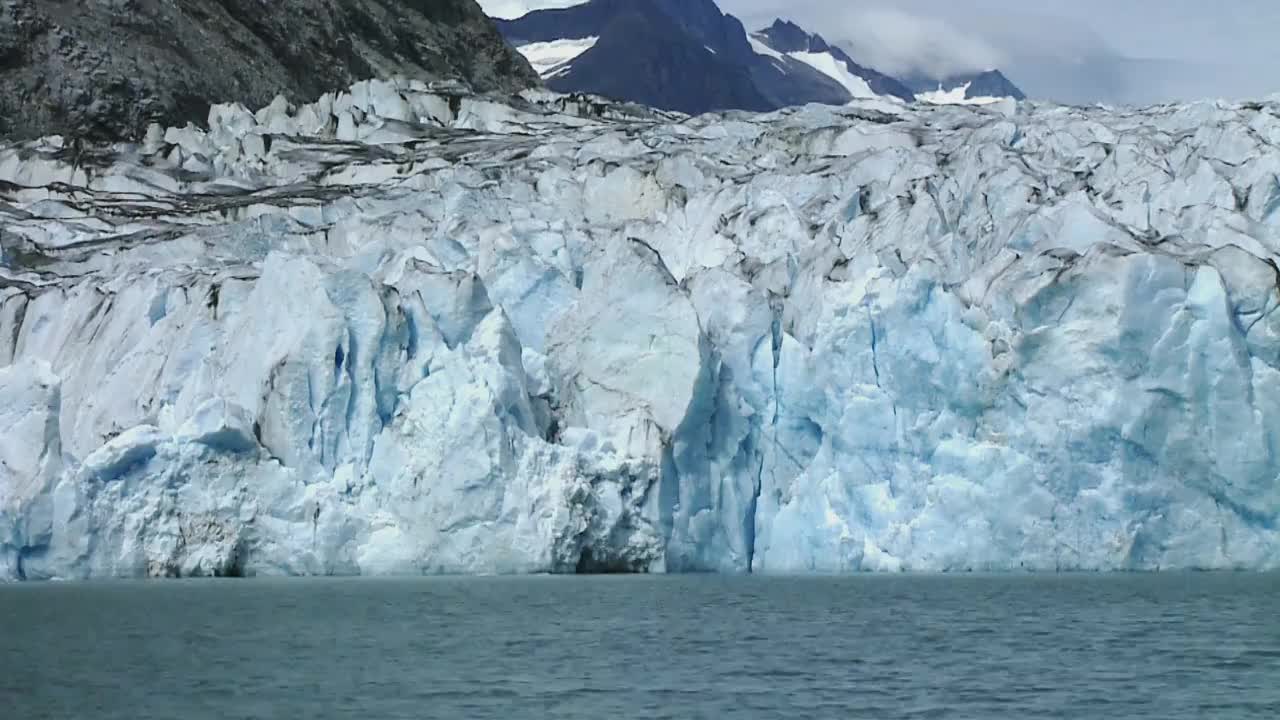


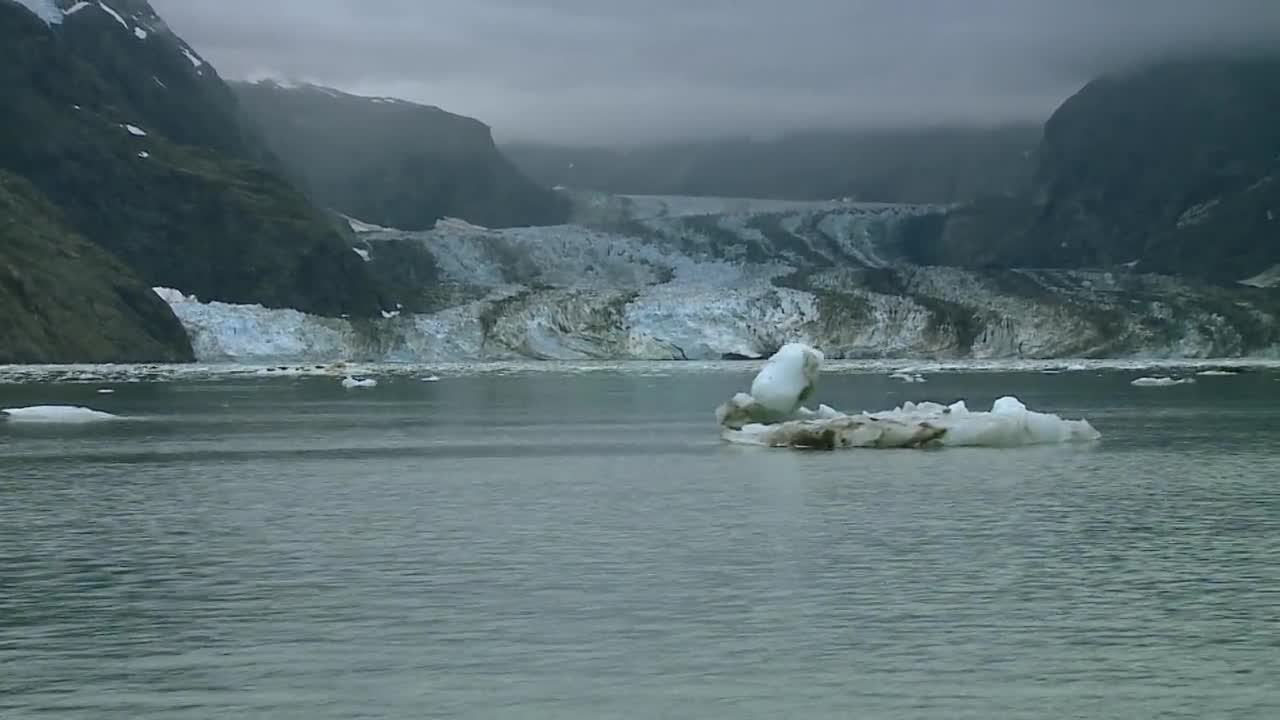
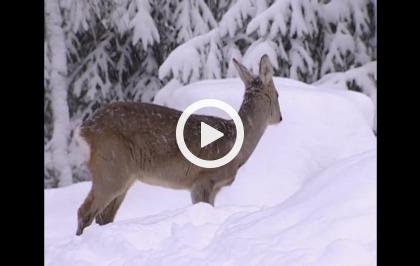
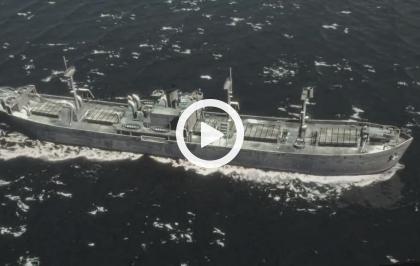
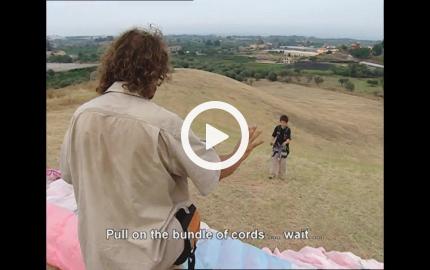
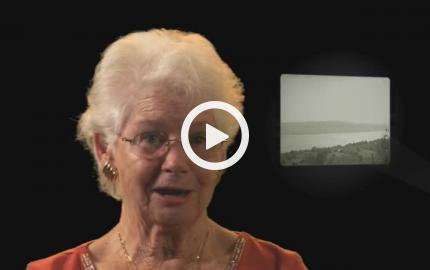

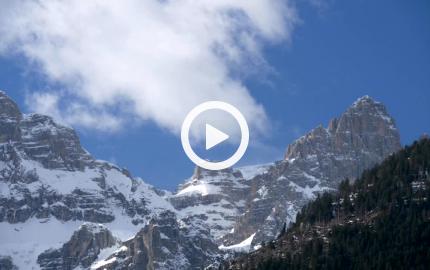


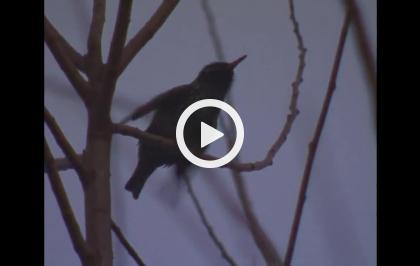

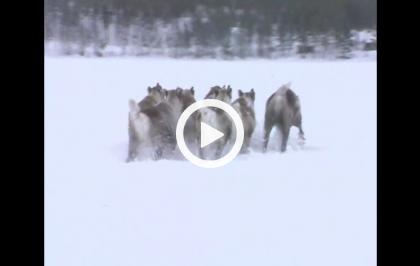
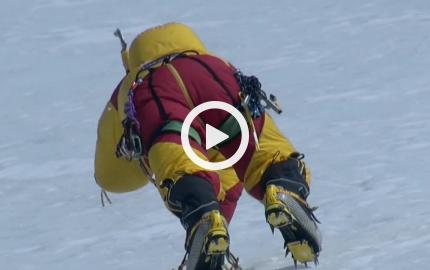

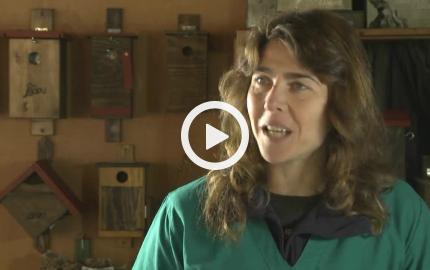
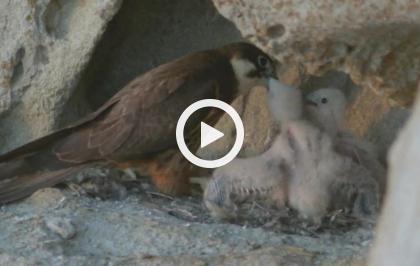
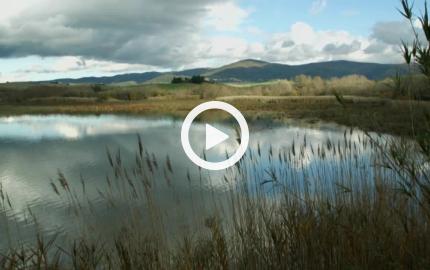
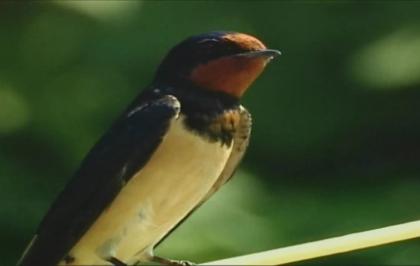
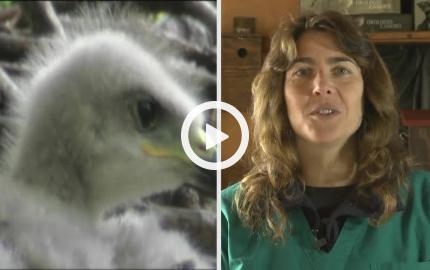
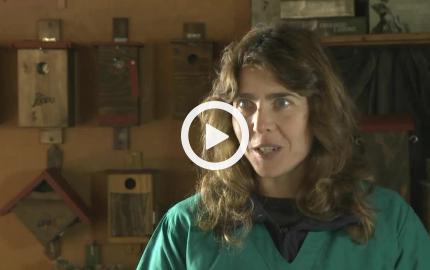
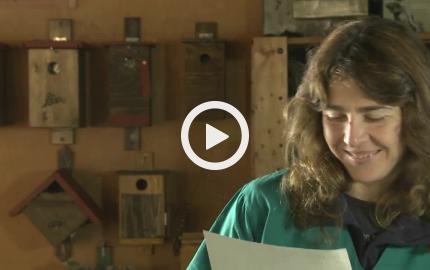
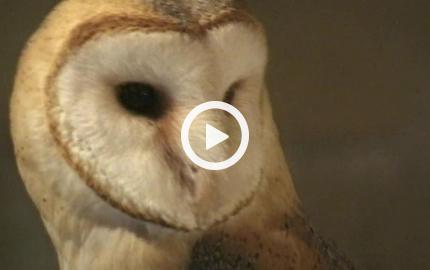
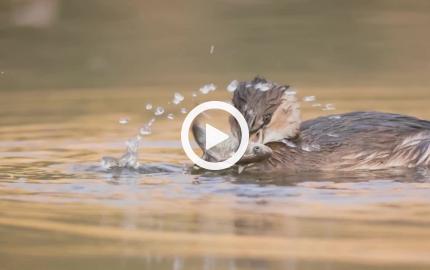
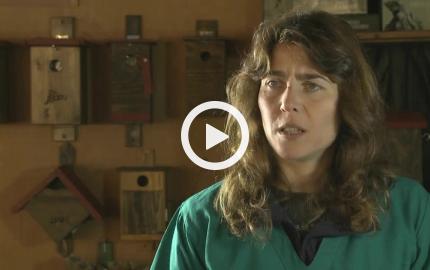

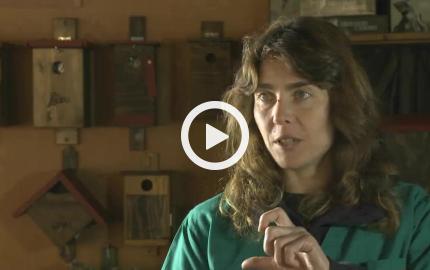
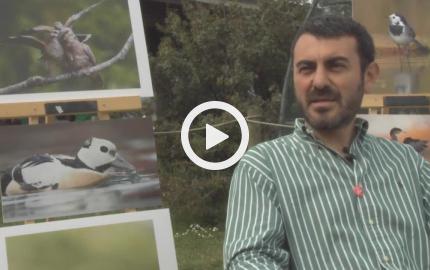




 è un marchio
è un marchio